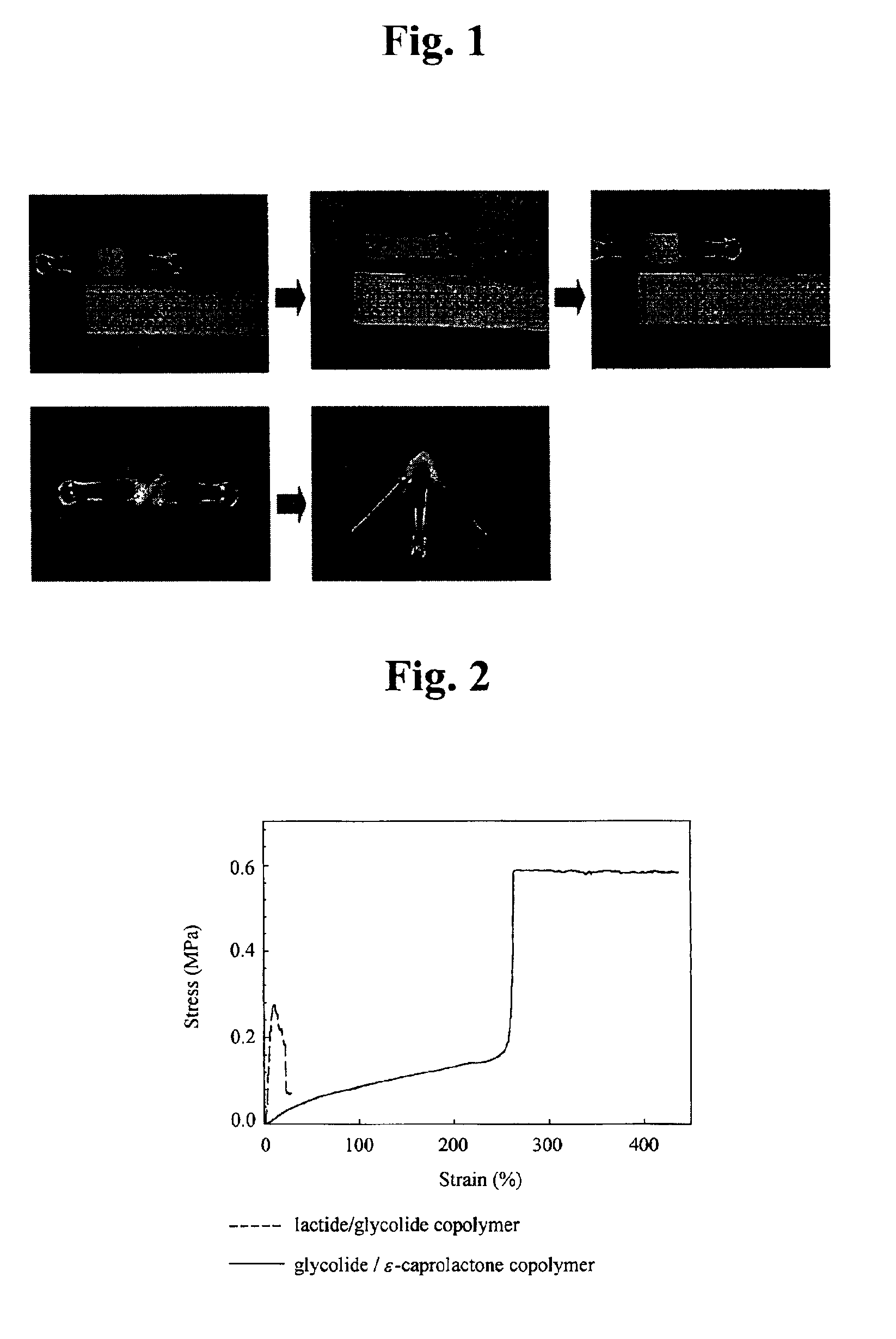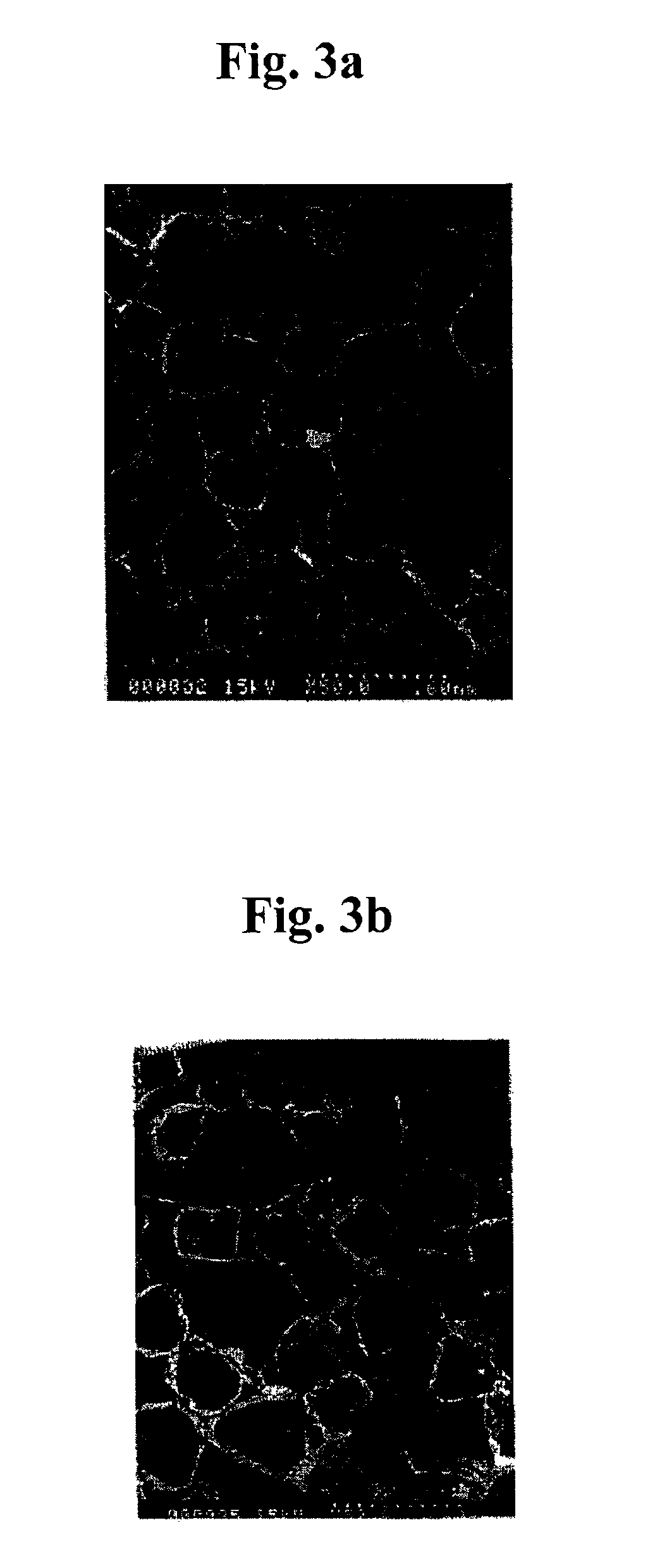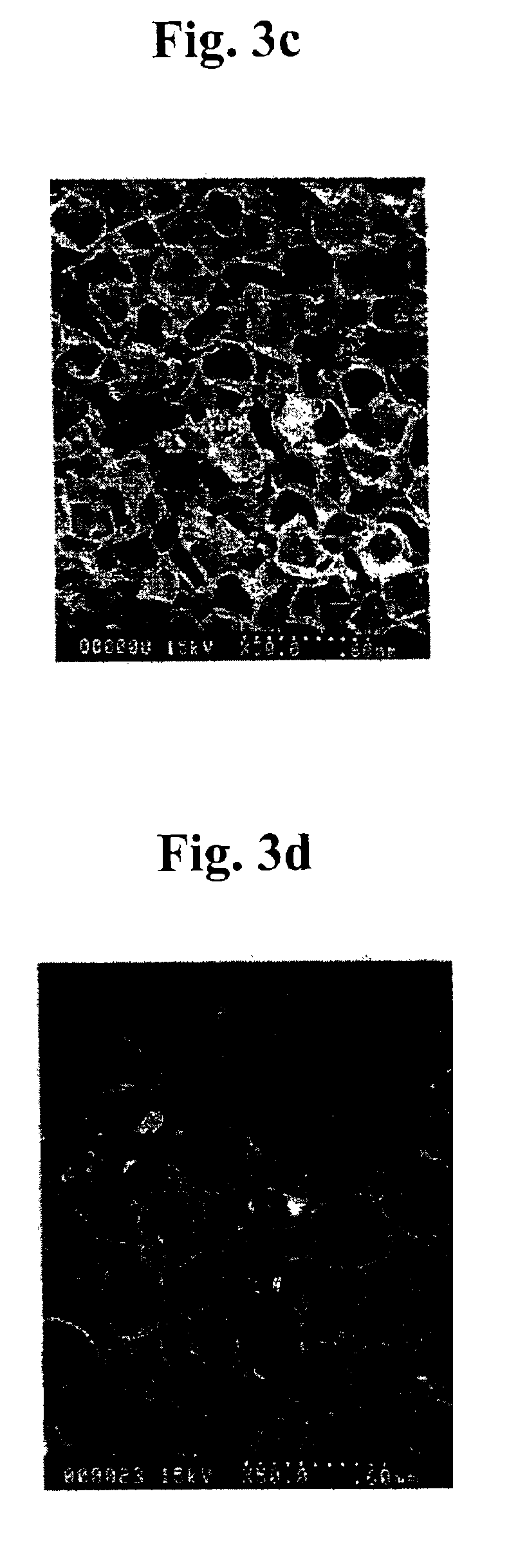Medical materials and porous scaffolds for tissue engineering made from the biodegradable glycolide/epsilon-caprolactone copolymer
a biodegradable glycolide and polycaprolactone technology, applied in biochemistry apparatus and processes, prosthesis, bandages, etc., can solve the problems of high tissue rejection reactivity and infection rate, difficult control of decomposition properties, and restricted use of the same, and achieve superior flexibility of polycaprolactone, excellent mechanical properties, and superior elasticity of polyglycolid
- Summary
- Abstract
- Description
- Claims
- Application Information
AI Technical Summary
Benefits of technology
Problems solved by technology
Method used
Image
Examples
example 1
[0043]Lactide of 15.900 g and glycolide of 8.550 g were reacted in a dried glass ampoule of 100 ml in volume in the presence of stannous octoate of 0.0099 g diluted in toluene of 0.070 ml. A teflon-coated magnetic bar was introduced in the ampoule, and the ampoule was kept in vacuum state at 0.01 mmHg for 2 hours to remove toluene and water. Injection of dried nitrogen and application of the vacuum state were performed three times, and the ampoule is thermally sealed. The thermally sealed ampoule was stirred by using a magnetic plate in an oil bath of 100° C. by raising the temperature to 150° C. in rate of 1° C. / min.
[0044]Subsequently, solid phase polymerization was performed at temperature of 150° C. for 20 hours. As the polymerization was processed, viscosity of polymerization system was raised and the agitation was available no more. At first, the polymerization system was in a transparent gel state, but it was altered to a translucent solid of ivory color as the polymerization ...
example 2
[0046]The lactide / glycolide copolymer obtained in Example 1 was homogeneously dissolved in a chloroform solution by using a magnetic stirrer so that it becomes a 4% solution. Manufactured polymeric solution of 22.5 g was added in a vial, and salt particle (NaCl salt) of ψ 200˜300 μm of 17.1 g was added to make the porosity as 95%. They were mixed uniformly by means of a small-sized mixer. The mixed solution was poured in a mold and dried for 24 hours. After the volatilization of all solvent, a disk type sample including the salt particle was washed several times with ultra pure water to remove the salt particle. At this time, the ultra pure water was changed at every six hours for two days so that the remaining salt within the sample was completely removed. Afterwards, the solution was freeze-dried.
[0047]According to Scanning Electron Micrograph (SEM) analysis on the size and distribution of pore of the porous scaffold as manufactured above, shape and distribution of pore of outer s...
example 3
[0049]Glycolide of 1.935 g and ε-caprolactone of 17.123 g were reacted in a dried glass ampoule of 100 ml in volume in the presence of stannous octoate of 0.0090 g diluted in toluene of 0.064 ml. A Teflon-coated magnetic bar was introduced in the ampoule filled with the reactants, and the ampoule was kept in vacuum state at 0.01 mmHg for 2 hours to remove toluene and water. Injection of dried nitrogen and application of the vacuum state were performed three times, and the ampoule was thermally sealed. The thermally sealed ampoule was agitated by using a magnetic plate in an oil bath of 90° C. by raising the temperature to 170° C. in rate of 1° C. / min.
[0050]Subsequently, solid phase polymerization was performed at temperature of 170° C. for 20 hours. As the polymerization was processed, viscosity of polymerization system was raised and the agitation was available no more. At first, the polymerization system was in a transparent gel state, but it was altered to a solid of gold color a...
PUM
| Property | Measurement | Unit |
|---|---|---|
| molecular weight | aaaaa | aaaaa |
| pore size | aaaaa | aaaaa |
| porosity | aaaaa | aaaaa |
Abstract
Description
Claims
Application Information
 Login to View More
Login to View More - R&D
- Intellectual Property
- Life Sciences
- Materials
- Tech Scout
- Unparalleled Data Quality
- Higher Quality Content
- 60% Fewer Hallucinations
Browse by: Latest US Patents, China's latest patents, Technical Efficacy Thesaurus, Application Domain, Technology Topic, Popular Technical Reports.
© 2025 PatSnap. All rights reserved.Legal|Privacy policy|Modern Slavery Act Transparency Statement|Sitemap|About US| Contact US: help@patsnap.com



